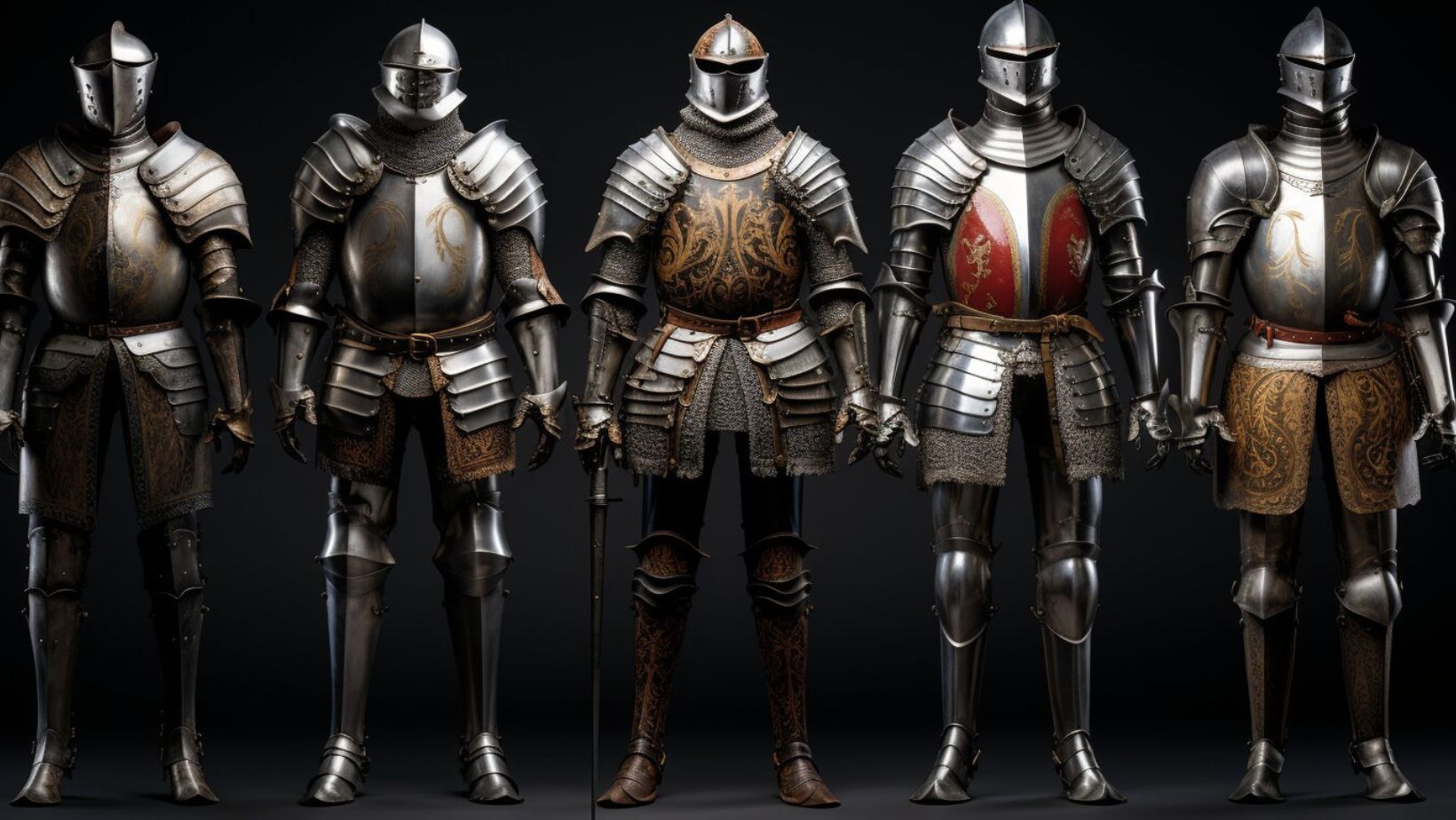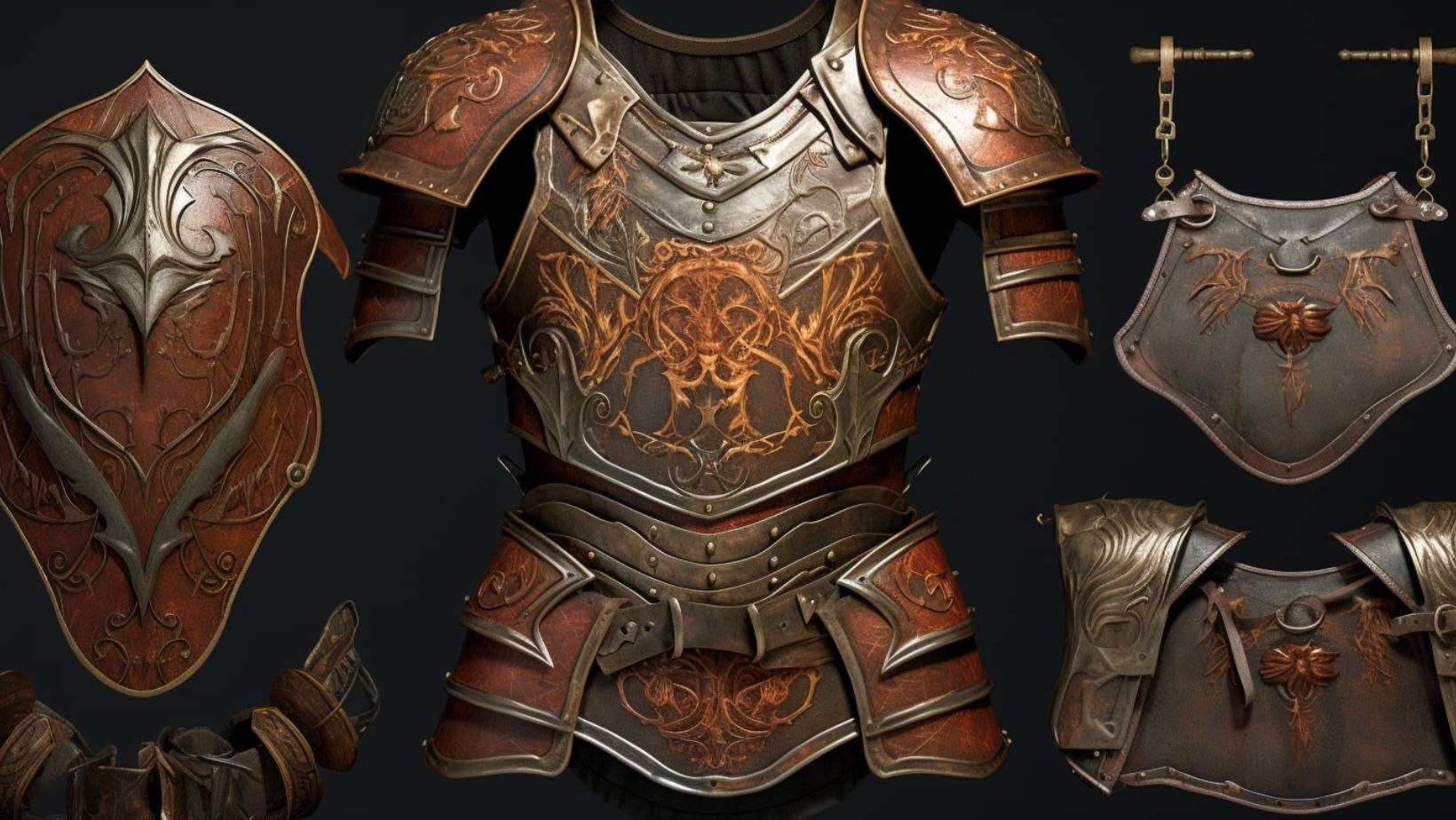Knight armor played a crucial role in medieval society. It was not just protection; it represented power, wealth, and honor. As knights took to the battlefield, their armor became a symbol of their status and skills. Innovations in armor designs dramatically changed warfare. From chainmail to plate armor, each advancement provided better protection and mobility. This evolution not only influenced battle strategies but also shaped the identity of knights. Join us as we explore the fascinating journey of knight armor, its innovations, and its lasting impact on history and culture.
The Early Beginnings of Knight Armor

In the early Middle Ages, armor was quite primitive compared to later developments. Most warriors used simple leather or padded garments for protection. These early armors were designed to absorb shock and reduce injuries from blows. However, they offered limited defense against weapons like swords and arrows.
As conflicts intensified, materials and construction methods evolved. Chainmail became a popular choice, made from interlinked iron rings. This provided better protection while allowing for flexibility and movement. Chainmail could cover various body parts, including the torso, arms, and legs.
Craftsmen learned to create this armor by forging iron into rings and then linking them together. The process was time-consuming but essential for a knight’s survival in battle. As warfare strategies changed, so did the demand for more advanced protective gear. These early innovations laid the foundation for the more sophisticated knight armor that would follow in the later medieval period.
The Rise of Chainmail
Chainmail armor emerged as a significant advancement in protective gear during the Middle Ages. Made from interlinked metal rings, chainmail offered superior flexibility and protection compared to earlier armor types. This design allowed knights and soldiers to move more freely while still being shielded from cutting attacks.
One of the key advantages of chainmail was its ability to absorb and distribute the force of blows. It was highly effective against slashing weapons like swords and axes. However, it was less effective against piercing weapons, such as arrows or thrusts from spears. To enhance protection, soldiers often wore chainmail over padded garments for added cushioning.
The rise of chainmail also influenced battlefield tactics. Its lightweight nature allowed soldiers to remain agile and respond quickly to threats. As knights became heavily armored, chainmail became a crucial component of their equipment. Its effectiveness solidified its place as a preferred armor type throughout the medieval period, setting the stage for future innovations in knight armor.
Plate Knight Armor Emergence
Plate armor emerged in the late medieval period as a revolutionary advancement in protective gear. Unlike chainmail, which consisted of interlinked rings, plate armor featured large metal plates that covered vital areas of the body. This design provided superior protection against both cutting and piercing attacks, making it a favored choice among knights.
The introduction of plate armor marked a shift in battlefield tactics. Knights became more heavily armored, allowing them to charge into battle with greater confidence. While chainmail offered flexibility, it did not provide the same level of defense against powerful blows. Plate armor effectively reduced the risk of injury from swords, arrows, and other weaponry.
In comparison, plate armor was heavier and less flexible than chainmail. However, advancements in metallurgy and design allowed for lighter and more comfortable plate options. Many knights began combining the two armor types for maximum protection and mobility. The evolution of plate armor ultimately changed the landscape of medieval warfare, influencing both armor design and combat strategies for generations to come.
Design Innovations in Knight Armor

Throughout the medieval period, armor design underwent significant innovations that enhanced both functionality and aesthetics. Key components like gauntlets, helmets, and breastplates were meticulously crafted to provide better protection while allowing for greater mobility. Gauntlets, for instance, featured articulated fingers, enabling knights to grip weapons effectively without sacrificing defense.
Helmets evolved to improve visibility and airflow while offering robust head protection. The iconic visored helmet became popular, allowing knights to shield their faces during combat. Meanwhile, breastplates were designed to deflect blows from weapons, protecting vital organs. These innovations were crucial in the ever-evolving battlefield scenarios.
Artistic designs also played a significant role in armor development. Skilled artisans adorned armor with intricate engravings and embellishments, reflecting the knight’s status and heritage. Many armors featured personalized motifs or heraldic symbols, showcasing individuality and lineage. This combination of practicality and artistry made armor not only a tool for survival but also a symbol of prestige and honor in medieval society.
Regional Variations in Knight Armor
Throughout medieval Europe, armor styles varied significantly due to geography and cultural influences. In northern regions, such as Germany and Scandinavia, armor was often heavier and designed to withstand harsh weather conditions. This included the use of thick layers of chainmail combined with sturdy plate armor, providing robust protection against both cold and combat.
Conversely, in southern regions like Italy and Spain, armor tended to be lighter and more ornate. Italian armor, for instance, was known for its artistic designs and elegant forms, reflecting the Renaissance’s emphasis on beauty and craftsmanship. Spanish armor often incorporated unique features, such as the use of morion helmets with distinctive crests, influenced by local customs and warfare strategies.
Cultural factors also played a role in armor design. The chivalric codes in France led to the creation of highly decorated armor, symbolizing a knight’s honor and status. Meanwhile, the practical needs of different battlefields influenced the development of armor styles that suited various combat scenarios. These regional variations highlight how local cultures and environments shaped the evolution of knight armor across Europe.
Armor and the Knight’s Identity
Armor played a crucial role in defining a knight’s identity during the medieval period. It was more than just protection; it symbolized status, power, and chivalric values. The materials, design, and ornamentation of a knight’s armor conveyed their rank and wealth. Heavily armored knights were often seen as noble warriors, while lighter armor signified lower status.
Armor also influenced the development of chivalric values and codes. Knights were expected to embody ideals like honor, bravery, and loyalty, which were often reflected in their armor. The way a knight presented themselves in battle, including their choice of armor, became a matter of personal and familial pride. Many knights chose unique designs and heraldic symbols to represent their lineage and achievements.
Additionally, armor was instrumental in establishing a knight’s reputation on the battlefield. A knight’s effectiveness in combat often depended on their armor’s quality and design. This connection between armor and identity solidified the knight’s role in society, reinforcing the importance of chivalric codes throughout the medieval ages. Overall, armor was integral to a knight’s identity, shaping their social standing and moral responsibilities.
The Role of Knight Armor in Warfare
Armor significantly changed the dynamics of warfare during the medieval period. Its evolution allowed knights to engage more effectively in battle. Heavily armored knights could withstand strikes from swords and arrows, giving them a tactical advantage. This protection led to more aggressive battle tactics, as knights felt safer charging into combat.
The introduction of plate armor shifted how battles were fought. Knights became heavily reliant on cavalry charges, which were effective due to their armored protection. This reliance required armies to develop new strategies to counter armored foes. Infantry units, for example, began using pikes and longbows to target knights effectively.
Armor also affected the layout of battle formations. Armies learned to adapt their tactics, often deploying infantry in ways to protect against cavalry charges. The rise of armor created a need for coordination between different units, emphasizing teamwork in warfare. Overall, the role of armor in warfare redefined medieval battles, shaping both tactics and strategies for knights and their opponents.
Decline of Armor Usage
The decline of heavy armor in warfare emerged due to several key factors. One of the most significant was the rise of gunpowder weapons. As firearms became more prevalent, traditional armor struggled to provide adequate protection. Bullets could pierce even the strongest plate armor, making it less effective on the battlefield.
Another contributing factor was the changing nature of warfare itself. Battles shifted from large-scale cavalry charges to more mobile infantry engagements. Armored knights became less practical in this new style of combat, which prioritized speed and maneuverability. Additionally, the cost of maintaining heavy armor made it less viable for many armies.
As a result, armor design began to evolve. New designs focused on lighter materials that offered some protection without hindering movement. This shift allowed soldiers to adapt to the changing dynamics of warfare. By the end of the 17th century, heavy armor had largely disappeared from the battlefield, marking a significant transformation in military tactics and equipment.
Legacy of Medieval Armor

The legacy of medieval armor significantly influences modern military gear. Many contemporary protective designs draw inspiration from the materials and functions of knight armor. For example, ballistic vests and helmets are developed to absorb impact and protect vital areas, much like their medieval counterparts. Innovations in lightweight materials also echo the efforts of armorers in the past to balance protection with mobility.
Culturally, knight armor remains a powerful symbol in literature and media. It represents bravery, honor, and the ideals of chivalry. Stories about knights in shining armor continue to captivate audiences, portraying them as heroic figures. Films, video games, and books often feature armor as a central element, emphasizing its historical significance and romantic appeal.
Additionally, armor is used in various modern contexts, such as cosplay and reenactments. It connects people with their heritage and evokes a sense of nostalgia for a time of knights and epic battles. Overall, the legacy of medieval armor endures, shaping both military innovations and cultural narratives today.
Conclusion: Knight Armor
The evolution of knight armor reflects significant advancements in warfare and societal values throughout the medieval period. From the early use of primitive materials to the intricate designs of plate armor, each innovation served to enhance protection and mobility on the battlefield. Armor not only represented the status of knights but also influenced the codes of chivalry that defined their identity. Today, the legacy of knight armor persists in modern military gear and popular culture, underscoring its enduring significance in both history and contemporary narratives. The story of armor illustrates how necessity and artistry shaped the very fabric of medieval life.
FAQs
What materials were commonly used in the construction of knight armor?
Knight armor was primarily made from materials such as iron and steel. Early armor included leather and bronze, while later designs incorporated plate steel for better protection. Chainmail was also a popular choice for its flexibility and effectiveness against slashing attacks.
How did armor vary between different types of knights?
Armor styles varied based on the knight’s role and status. Heavily armored knights, like the mounted knights of the late Middle Ages, wore full plate armor for maximum protection. Lesser knights or foot soldiers might have lighter armor to enhance mobility.
What was the average weight of a knight’s armor?
A full suit of armor could weigh between 45 to 100 pounds, depending on its design and materials. While this weight may seem cumbersome, armor was designed for balance and mobility, allowing knights to move effectively during combat.
How did armor impact the social status of knights in medieval society?
Armor was a symbol of wealth and prestige, signifying a knight’s social status. The quality and intricacy of a knight’s armor often reflected their wealth and position within the feudal system, contributing to their identity and honor.
Did armor provide complete protection in battle?
While armor significantly increased a knight’s chances of survival, it did not offer complete protection. Knights could still be vulnerable to certain weapons, such as those designed to penetrate armor, and injuries could occur from blunt force, falls, or other combat-related incidents.

